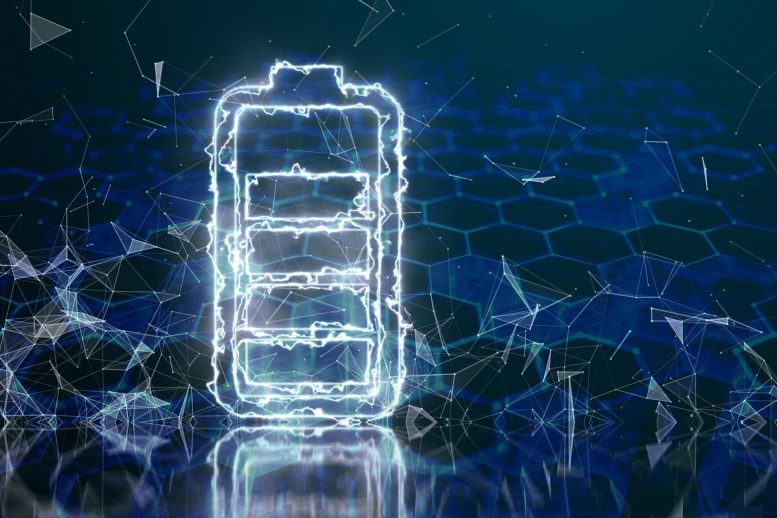
Rechargeable lithium-ion batteries play a crucial role in the energy transition, but their layered oxide electrodes become unstable during charging, reducing their cycle life. By introducing chemical short-range disorder into the electrode material, researchers have improved structural stability, leading to longer cycle life and shorter charging times.
What determines the cycle life of batteries? And, more importantly, how can we extend it? An international research team led by TU Delft has discovered that local disorder in the oxide cathode material increases the number of times Li-ion batteries can be charged and discharged. Their results have been published in Nature.
Unstable electrode
Rechargeable batteries are a key ingredient of the energy transition, especially now that more and more renewable energy is becoming available. Among the many types of rechargeable batteries, Li-ion batteries are among the most powerful and widely used ones. To electrically connect them, layered oxides are often used as electrodes. However, their atomic structure becomes unstable when the battery is being charged. This ultimately affects the battery cycle life.
Local disorder
To solve this problem, the ‘Storage of Electrochemical Energy’ group at TU Delft teamed up with international researchers. The paper’s lead author, Qidi Wang: “The layered oxide used as cathode material for Li-ion batteries is neatly ordered. We conducted a structure design study to introduce chemical short-range disorder into this material through an improved synthesis method. As a result, it became more stable during battery use.”
The improved structural stability almost doubled the battery’s capacity retention after 200 charging/discharging cycles. Credit: Roy Borghouts Fotografie
Longer cycle life, shorter charging time
The improved structural stability almost doubled the battery’s capacity retention after 200 charging/discharging cycles. In addition, this chemical short-range disorder increases the charge transfer in the electrode, resulting in shorter charging times. The team demonstrated these advantages for well-established commercial cathodes such as lithium cobalt oxide (LiCoO2) and lithium nickel manganese cobalt oxide (NMC811).
Critical materials
The outcomes could lead to a new generation of Li-ion batteries, with a lower manufacturing cost and smaller CO2 footprint per unit of energy stored over its lifetime. The team will next investigate if the same material design principles can be used to build cathodes from raw materials that are less scarce. “Both cobalt and nickel are so-called critical materials for energy technologies and it would be a good thing to reduce the use of these materials in batteries,” says the paper’s senior author, Marnix Wagemaker.
Reference: “Chemical short-range disorder in lithium oxide cathodes” by Qidi Wang, Zhenpeng Yao, Jianlin Wang, Hao Guo, Chao Li, Dong Zhou, Xuedong Bai, Hong Li, Baohua Li, Marnix Wagemaker and Chenglong Zhao, 8 May 2024, Nature.
DOI: 10.1038/s41586-024-07362-8
>>> Read full article>>>
Copyright for syndicated content belongs to the linked Source : SciTechDaily – https://scitechdaily.com/revolutionary-battery-tech-promises-less-charging-time-more-energy-storage/